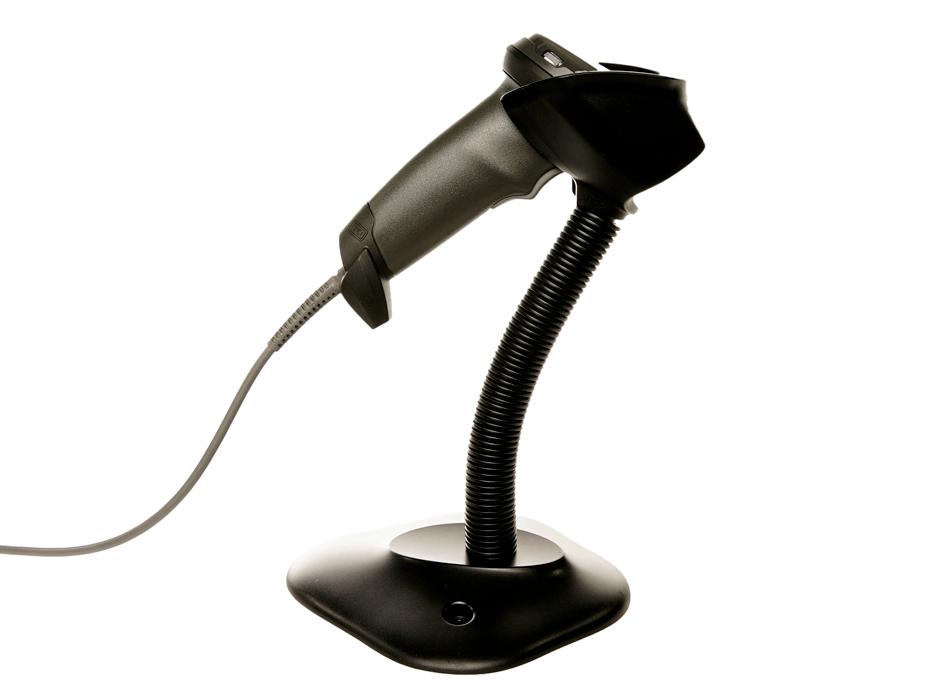Best Practices for Barcode Scanners and Integrated Scales
Follow the best practices in this guide to ensure your barcode scanner or scale will be functioning properly for years to come. From setup dos and don’ts to proper cleaning techniques, check out our suggestions for keeping your barcode scanner and weight scale hardware in the best possible condition.
Table of Contents
Barcode Scanners
S740 Bluetooth Barcode Scanner
The S740 is a 2D barcode scanner. You may also use the QX Stand with this scanner for even faster input.

- The barcode scanner includes two rechargeable AA 2000mAh NiMH batteries (pre-installed in scanner).
Purchase replacement batteries from Socket here. Do NOT use any other type of batteries.
- Charge the scanner for at least 6 hours before using it the first time.
- Keep the scanner away from liquids and extreme temperatures.
Clean the scanner with a dry cloth to keep it dust-free.
- Do not disassemble the barcode scanner, doing so voids its warranty.
- For best performance, keep away from any devices that may affect Bluetooth signals, such as microwaves.
S700 / S730 Bluetooth Barcode Scanners
The S700 and S730 barcode scanners are 1D scanners that are easy to pair and use! Use the supported charging dock for quick and convenient charging.

- The barcode scanners include two rechargeable AA 2000mAh NiMH batteries (pre-installed in scanner).
Purchase replacement batteries from Socket here. Do NOT use any other type of batteries.
- Charge the scanner for at least 6 hours before using it the first time.
- Keep the scanner away from liquids and extreme temperatures.
Clean the scanner with a dry cloth to keep it dust-free.
- Do not disassemble the barcode scanner, doing so voids its warranty.
- Keep away from any devices that may obstruct Bluetooth signals, such as microwaves.
Zebra USB Barcode Scanners
Zebra USB Barcode Scanners connect to the register via USB cable to scan 1D item barcodes and 2D barcodes on state-issued IDs. The Zebra DS4608 barcode scanner can also scan passports.

- When connecting the scanner to an iPad, use an iPad power adapter.
Other adapters may not provide enough energy to charge the iPad and power the scanner.
- Before setting up the scanner for the first time, update the Retail POS (S-Series) app to ensure the scanner will work properly.
For help updating, visit our Introduction to the iPad or Introduction to Android article.
- If using the Zebra DS4608 scanner, passport scanning must be enabled manually.
- Place the scanner in the included stand to enable hands-free scanning.
- Keep the scanner away from liquids and extreme temperatures.
- Clean the scanner with a dry cloth to keep it dust-free.
- Do not disassemble the barcode scanner as doing so voids its warranty.
The Mini USB Barcode Scanner
The Mini USB Barcode Scanner connects to the register via USB cable to scan 1D item barcodes.
- When connecting the scanner to an iPad, use an iPad power adapter.
Other adapters may not provide enough energy to charge the iPad and power the scanner.
- Keep the scanner away from liquids and extreme temperatures.
- Clean the scanner with a dry cloth to keep it dust-free.
- Do not disassemble the barcode scanner, doing so voids its warranty.
Scales
Star mG-S8200 Scale
The Star Micronics mG-S8200 Scale connects to your Android Lightspeed Retail POS via a wireless Bluetooth or wired USB connection and can run on AC or battery power, giving you flexibility to set it up wherever a register is located.

- Set up the scale on a flat, level, and stable surface.
- Do not install the scale in direct sunlight, near air conditioning or heating equipment, or in a hot, dusty, or humid environment.
All of the above factors can affect the accuracy of the scale.
- Keep the scale away from devices that may obstruct Bluetooth signals, such as microwaves.
- Use only the AC adapter and weighing pan included with the scale.
- If running the scale on battery power, do not mix new and old batteries or batteries from multiple brands.
- Do not disassemble the scale, doing so voids its warranty and could result in injury.
- Avoid moving the scale when an item is on the weighing pan to prevent damage to the item and scale.
- Clean the scale regularly by removing the weighing pan and base and wiping everything down with a dry cloth. If necessary, clean the weighing pan and base with a neutral detergent.
- Periodically calibrate the scale to ensure accuracy by following the steps in the operation manual.
IMPORTANT: Laws regulating the use of scales in commercial transactions vary by state and region. Before calibrating a scale to weigh and sell items, you must research and follow all local guidelines. For example, some US states require scales to be calibrated by a licensed technician. Not obeying these rules can result in fines and legal action against your business. Learn about the scale requirements for each US state here.